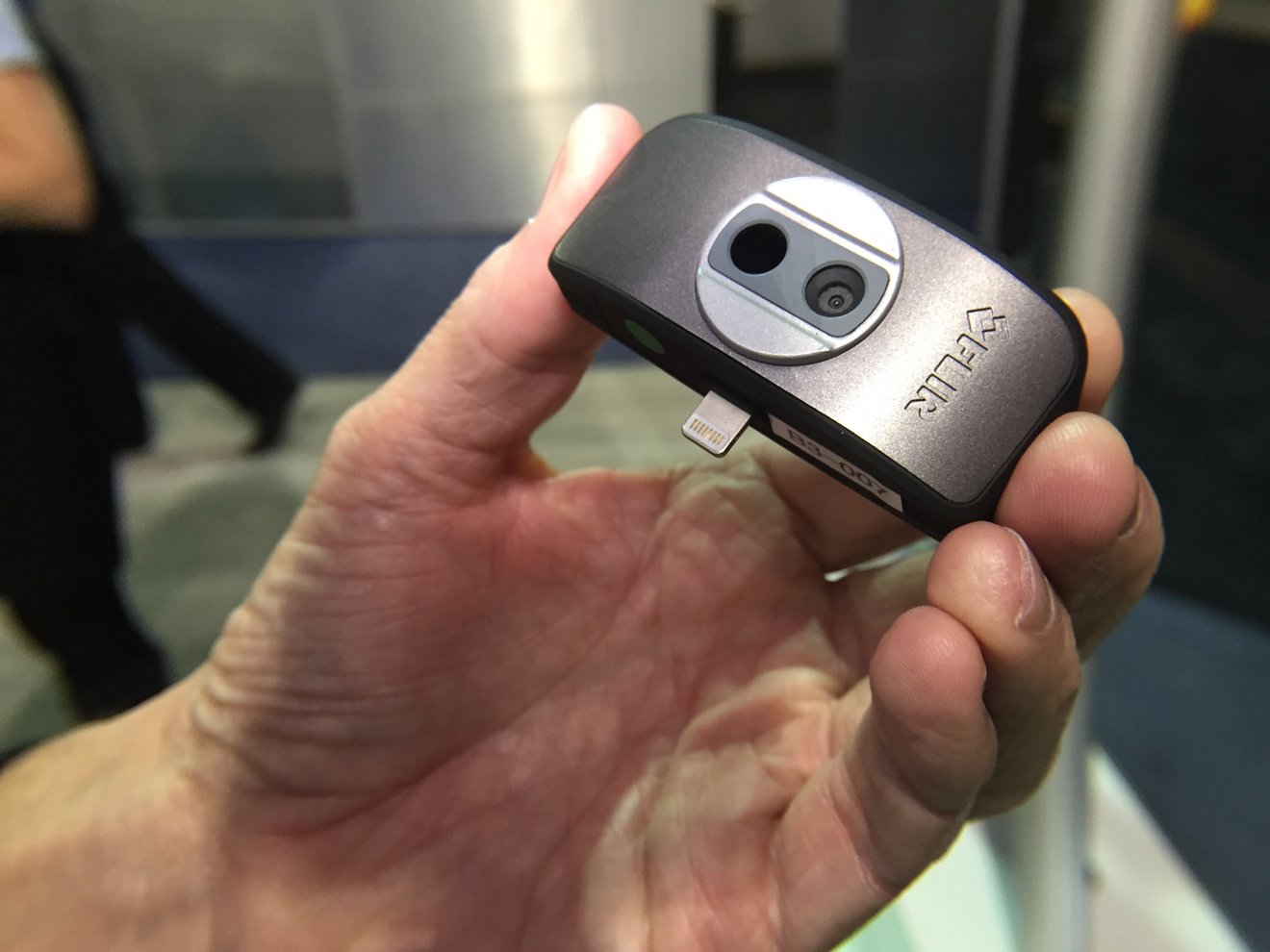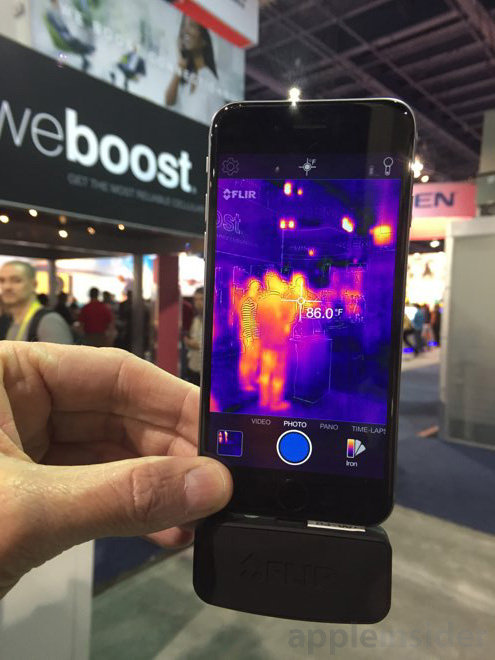At CES on Tuesday, Thermal imaging pioneers FLIR debuted a next-generation FLIR ONE consumer-level thermal camera that one-ups its predecessor by trading in the large semi-permanent iPhone case form factor for a small plug-and-play dongle with higher resolution sensors.
Like the first-generation FLIR ONE, the second iteration will once again employ a Lepton thermal camera core, FLIR's branded long-wave infrared sensor, but updated to achieve enhanced resolutions and higher performance. For example, converted temperature readings are said to be accurate within a range of plus or minus three degrees Fahrenheit.
FLIR will be carrying over its patented MSX technology, which combines output from the Lepton system with image data from a visible light spectrum camera to produce sharply detailed thermal images. Due to technical limitations and the nature of light, images reproduced from infrared radiation data are usually fuzzy, but FLIR's hybrid technology offers clearly defined borders and depth of field. AppleInsider found MSX to be a key feature for the first-generation FLIR ONE.
Like the competing Seek Thermal accessory, the second-gen FLIR ONE takes shape as a plug-and-play Lightning dongle. Because the original ONE, still available in stores for $249, incorporates its own standalone battery, the unit is designed to attach to an iPhone via a sled-like case. The solution limited compatibility to iPhone 5/5s models, leaving users who upgraded to an iPhone 6 out of luck.
FLIR is positioning the ONE as a tool for home improvement projects, such as finding water or heat leaks, but notes the device is great for recreation as well. While demoing the unit, representatives threw out the term "Thermie" for thermal selfie.
FLIR didn't say how much the second-generation FLIR ONE will cost, but the company expects the device to hit store shelves in mid-2015.
 Victor Marks
Victor Marks









 Christine McKee
Christine McKee
 Marko Zivkovic
Marko Zivkovic
 Mike Wuerthele
Mike Wuerthele

 Amber Neely
Amber Neely
 Sponsored Content
Sponsored Content
 Wesley Hilliard
Wesley Hilliard










6 Comments
This is looking like the FLIR they should have released the first time around... I was about to pull the the trigger on the Seek, but now I'll wait to see how the newer unit compares.
I actually used the first commercially available IR system back in the 80's it was design and made by Huges who first invented the technology for the military, Flir came in the game much later. They were one the first to come out with a room temperature sensor, all the "Good" detectors had to be cold with LN or a piezo electric cooler or so other inert compressed gas. Flir always had issues with temperature accuracy around measuring temperature at and below room temperature and as it said in the article lots of details was lost as the target temperature near the detectors operating temperatures.
yeah good for home projects or to have some come to your house and say you have leaks in the house. I had and idiot one try and tell me the reason the window on the house were showing blue (black) it meant cold air was coming through. The idiot had not idea that IR these detector measure does not pass through gas and what you are seeing is more reflected energy. Measure IR is complicated and most people do not understand it.
pretty awesome. would be better if it was a stand alone module with the iphone as a viewer via wifi for some hard to reach places.
Anyone know the resolution on this one? I heard the last one wasn't that great.
here http://goo.gl/BolXoH you can find more info anout next gen FLIR one